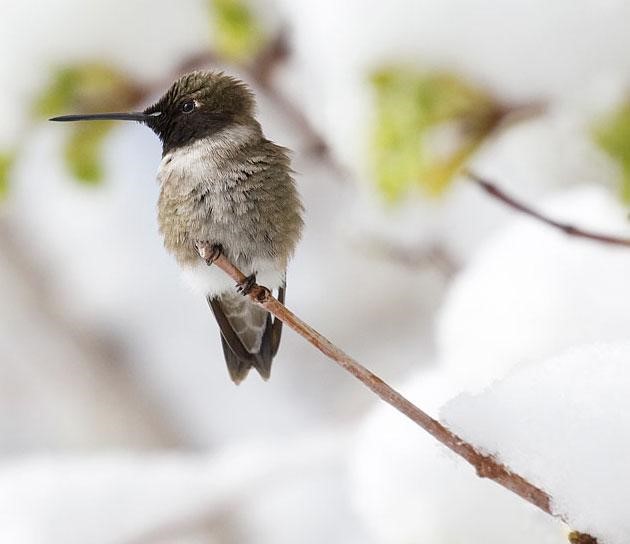When it’s cold we bundle up in our hats, coats, and gloves. However after a few minutes outside in the snow and wind, we quickly begin to feel cold again! If it is so hard for us humans to stay warm in the cold, how do birds survive?
Dark-eyed Junco
Feathers
A birds first method of defense against the cold weather are its feathers. Not only do they provide insulation from the cold, they also have a waterproofing factor! Birds produce a special oil called Preen Oil which some cold savvy birds use to waterproof their feathers. This is important because the only thing worse than a cold bird is a cold, wet bird! Feathers trap pockets of air around the body and the birds internal body temperature will then warm up the trapped air. Birds will fluff their feathers in the cold so that they can trap as much air as possible. To maintain the pockets of air, a birds feathers must be flexible, clean, and dry. This is where the Preen Oil comes in and it allows the bird to have a water resistant top layer and a heated inner layer!
Changing Temperatures
Torpor is a state of reduced metabolism that is induced when a birds body temperature is lowered so that it will require fewer calories to maintain a appropriate heat levels. Many birds will enter torpor to save energy during chilly winter nights, especially Hummingbirds which undergo this process nightly. Torpor is not very common in winter birds like the Black-capped Chickadee because warming back up in the morning would take up too much extra energy. Instead, they experience a more moderate version of torpor called regulated hypothermia. Entering torpor can sometimes be dangerous as the reduced temperature can lead to slower reaction times which increases the birds vulnerability to predators.
How to Help
Although birds have many adaptations to conserve heat, bird mortality can be very high during harsh winters or in sudden cold snaps. To give your neighbourhood birds an advantage during Arctic-like conditions make sure you keep your bird feeders stocked with foods that are high in fat and calories such as seeds, peanut butter, and nuts. These fill birds with plenty of energy that will enable them to generate more body heat. Birds can use energy to melt snow into water that they can drink but this will lower their body temperature. Providing water from a heated bird bath will give your neighbourhood birds a much better chance of survival.
Hummingbird - Roi Agneta
Don’t worry about how backyard birds keep warm when the temperature starts to drop, they have plenty of effective adaptations that allow them to survive even the coldest nights. Bird lovers who understand these adaptations and help birds by providing them with suitable food and shelter will be sure to enjoy warm and healthy backyard birds no matter what the temperature is.


